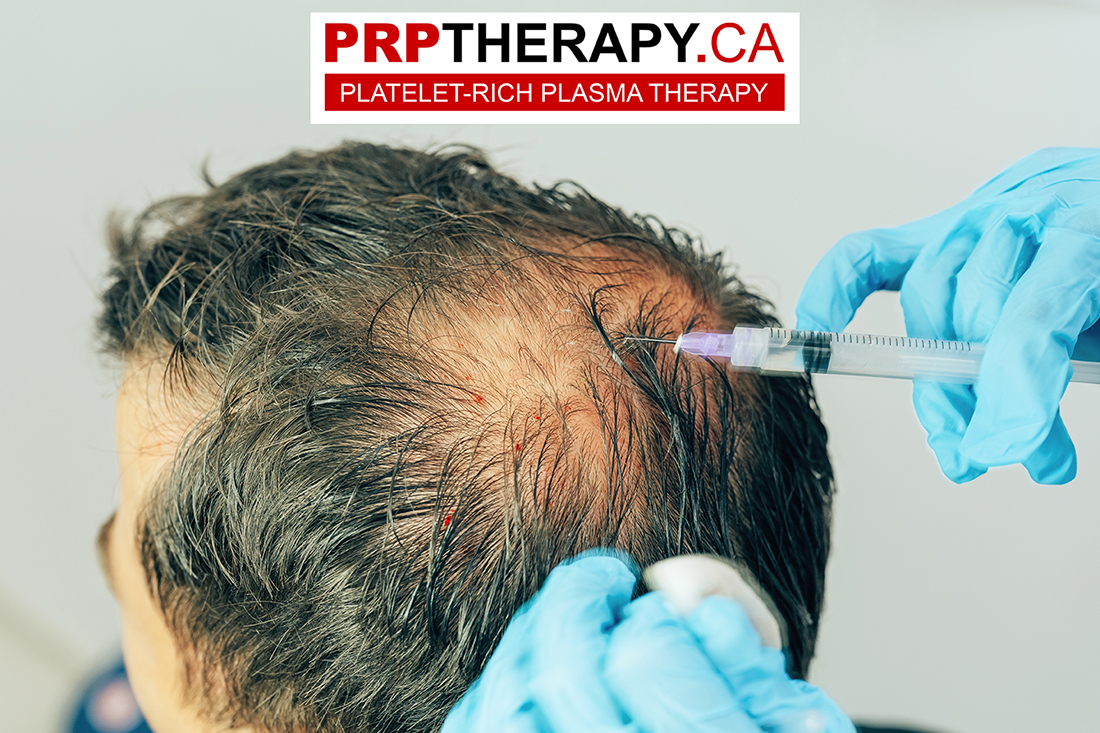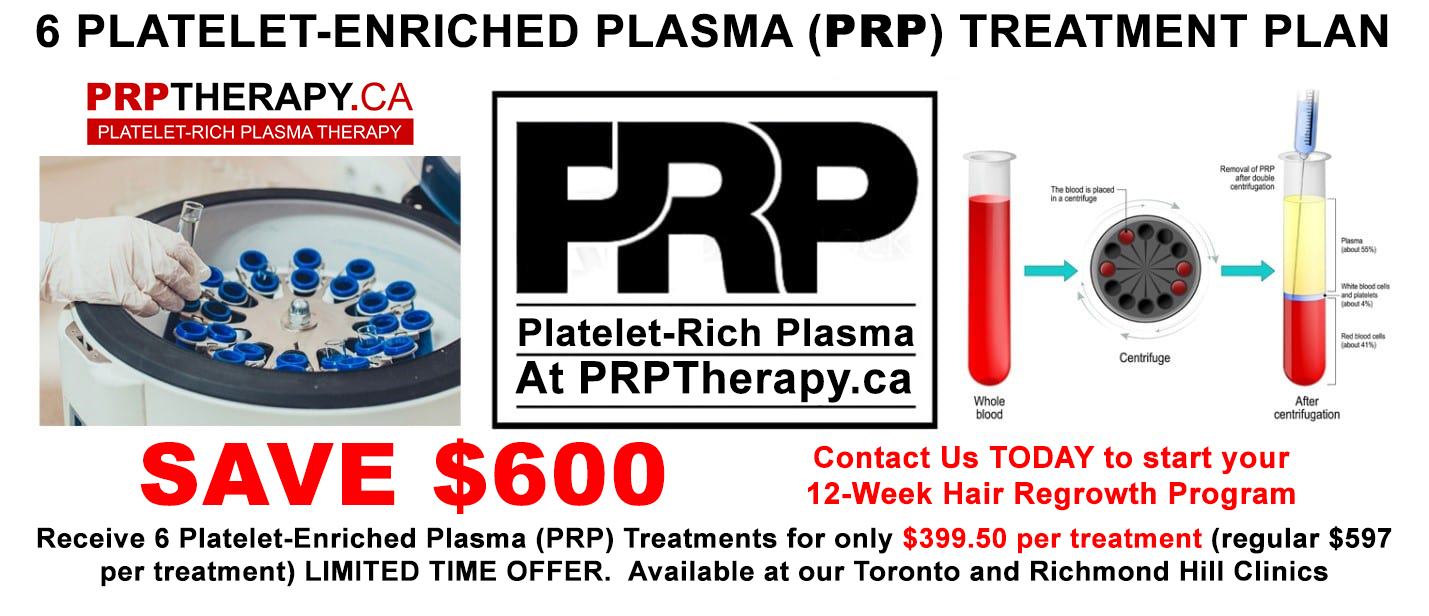Table of Contents
Exploring PRP Therapy: The Future of Healing and Regeneration
What Is PRP Therapy
Platelet-Rich Plasma therapy, or PRP therapy, is a regenerative medicine that utilizes the body’s cells and natural processes to hasten recovery and healing. PRP treatment employs platelet-rich plasma, a concentrated source of bioactive proteins and growth factors obtained from a patient’s blood. This substance is injected into an injured area or area of concern, where it aids in tissue repair and regeneration.
The History of PRP
The development and use of platelet-rich plasma therapy trace back several decades, with the first applications seen in hematology. Surgeons initially used it as a blood clotting adjunct during complex procedures. However, in the early 2000s, the benefits of PRP therapy started to emerge in fields like sports medicine, orthopedics, and cosmetic procedures, where its healing and regenerative properties were leveraged.
Understanding How PRP Works
PRP Therapy: The Process
In PRP therapy, the process is quite straightforward, involving the removal of a small volume of blood from the patient. This blood is then put in a centrifuge, a machine that rotates the blood rapidly. This high-speed rotation triggers the division of the blood into various layers: red blood cells, white blood cells, and platelets. The platelets are found in the plasma, the liquid part of the blood.
The doctor then extracts the platelet-rich plasma, which now boasts a higher concentration of platelets than regular blood. A local anesthetic is applied to the affected area before injecting the PRP. The entire process typically wraps up in around an hour and usually induces slight discomfort, if any.
Key Components of PRP
The effectiveness of PRP therapy hinges on the properties of platelets and the growth factors they release. Platelets are a type of blood cell that plays an important role in clot formation, essential for wound healing. Besides their role in clotting, platelets release growth factors that stimulate cell growth, new collagen formation, and the development of new blood vessels, all key elements in the tissue repair process.
The Benefits of PRP Therapy
Healing Injuries with PRP
PRP therapy treats various injuries, particularly those involving soft tissues like tendons, ligaments, and muscles. For example, it’s commonly used in treating anterior cruciate ligament (ACL) injuries, articular cartilage damage, and tendon injuries, such as a torn tendon, where its regenerative properties help accelerate the body’s healing process and restore normal function.
PRP Therapy and Pain Management
Besides its therapeutic advantages, PRP therapy has gained recognition as a potent tool in pain management, especially in conditions like osteoarthritis, including its manifestation in the knee. PRP injections can help mitigate pain by reducing inflammation and promoting healthy tissue regeneration, making it a viable alternative to more aggressive treatments like cortisone injections or hyaluronic acid treatment.
Treating Hair Loss with PRP
A more recent use of PRP therapy addresses hair loss conditions like androgenetic alopecia and alopecia areata. When injected into the scalp, PRP hair treatment spurs hair growth by enhancing blood circulation and delivering growth factors to the hair follicles. However, it’s crucial to remember that outcomes can significantly differ, and several sessions may be necessary to obtain the sought-after effects.
Criticisms and Considerations of PRP Therapy
Limitations and Concerns
While PRP therapy has been shown to benefit in various conditions, there are certain limitations and concerns. One criticism is the need for more standardization across PRP treatments, which can affect results. Additionally, there needs to be more evidence to prove its superiority over traditional methods in some cases. PRP therapy might not be suitable for everyone, especially people with certain conditions such as a blood disorder, cancer, or an underlying condition that could affect the body’s ability to heal.
Potential Side Effects of PRP
PRP therapy is generally safe as it uses a patient’s own blood, reducing the risk of allergic reactions or disease transmission. However, any procedure involving injections carries some risks, including infection, nerve damage, or pain at the injection site. While rare, there’s also a risk of blood clots forming.
PRP Therapy in Sports Medicine
Case Studies of PRP Therapy in Athletes
Numerous case studies have highlighted the benefits of PRP therapy in athletes. Many have reported significant improvement in pain and function after PRP treatments for injuries like knee injury, tendonitis, and ligament sprains. The therapy’s potential to expedite recovery and return to play has garnered significant interest in the sporting world.
Controversies Surrounding PRP in Athletics
Despite promising results, PRP therapy in sports medicine isn’t without controversy. Questions have arisen about the fairness and ethics of its use, with critics suggesting it might provide an unfair advantage by enhancing an athlete’s ability to recover from injury. While not currently prohibited by the World Anti-Doping Agency, debates continue about the therapy’s place in competitive sports.
PRP Therapy in Aesthetic Medicine
PRP for Skin Rejuvenation
PRP therapy is gaining recognition in aesthetic medicine for its role in skin rejuvenation. When injected into the skin, PRP stimulates the production of new collagen, a key protein that helps maintain skin elasticity and firmness. PRP treatments can improve skin texture and complexion over several months by promoting the formation of new blood vessels and enhancing blood flow.
PRP Therapy in Hair Restoration Treatments
As mentioned earlier, PRP therapy is showing promising results in hair restoration. Particularly in cases of androgenetic alopecia, where a combination of genetics and hormones causes hair loss, PRP treatment can stimulate hair growth and reduce hair thinning. Nevertheless, patients must discuss with a healthcare provider to comprehend the anticipated outcomes and the requisite number of sessions.
Current Research and Developments in PRP
Future of PRP Therapy
While the future of PRP therapy is promising, further research and development are needed to establish definitive guidelines regarding the preparation and administration of PRP. This will help standardize the procedure and improve its overall effectiveness. Additionally, more research into its applications across different medical fields can pave the way for more extensive use of regenerative medicine.
Groundbreaking Studies on PRP
Several groundbreaking studies have contributed to our understanding of PRP therapy and its potential applications. Recent research has highlighted its benefits in managing osteoarthritis symptoms, reducing dependence on medications like aspirin, and potentially avoiding surgery. Moreover, ongoing studies are exploring the role of PRP therapy in treating more severe and complex conditions.
Q&A
What is PRP and how does it relate to the body's natural healing process?
Platelet Rich Plasma (PRP) therapy uses the body’s healing mechanisms. The process involves utilizing a concentration of platelets — small blood cells instrumental in wound healing — to speed up repairing injured or compromised tissue. When these platelets are activated, they release growth factors and other proteins that promote healing in the affected area.
What to Expect During a PRP Treatment?
During a PRP treatment, your doctor draws a small amount of blood, usually from your arm. The blood is subjected to a centrifuge, which separates the platelets and produces platelet-rich plasma. The PRP is injected after applying a local anesthetic to the target area. The procedure usually lasts approximately an hour, and most patients can resume their usual activities right after the treatment.
Is PRP Therapy Right for You?
Determining whether PRP therapy is right for you largely depends on the nature of your injury or condition and overall health. While PRP has shown promising results in many cases, it’s not a one-size-fits-all solution. Certain factors, such as your injury’s severity and location, general health, and body’s response to treatment, may affect its efficacy. Furthermore, it’s not recommended for those with certain health conditions, such as cancer or a blood disorder. It’s always best to consult your healthcare provider to review your situation, potential benefits, risks, and other treatment options.
How does PRP benefit connective tissue injuries?
Connective tissues like tendons and ligaments often have poor blood supply, slowing their healing process. PRP therapy can help accelerate this process. The growth factors in PRP stimulate tissue regeneration, reduce inflammation, and accelerate the healing of these tissues. This makes PRP therapy a potential treatment for connective tissue injuries.
Has the Food and Drug Administration (FDA) approved PRP?
The FDA had not specifically approved PRP therapy. This is mainly because the FDA typically regulates products, such as drugs and medical devices, rather than procedures like PRP therapy. However, the equipment used to separate blood components for PRP therapy is FDA approved.
What is the mechanism of action of PRP?
The mechanism of action of PRP therapy involves utilizing the body’s healing process. Injecting the platelet-rich plasma into a wounded or damaged part of the body triggers the body’s innate healing mechanism due to the high concentration of growth factors within the platelets. This includes increasing cell proliferation, stimulating new blood vessel growth, and promoting healthy tissue regeneration.
How long does a PRP treatment session typically last?
A typical PRP treatment session usually lasts about 60 minutes. This includes the blood draw time, PRP preparation (which involves centrifugation to separate the platelets from other blood components), and the injection itself.
What is the difference between plasma and Platelet Rich Plasma (PRP)?
Plasma is the liquid portion of the blood that carries cells and proteins throughout the body. On the other hand, Platelet Rich Plasma (PRP) is plasma that has been processed to have a higher concentration of platelets. These platelets contain many growth factors critical to the body’s healing process.
How is the term 'rich plasma' relevant in PRP?
The ‘rich’ in Platelet Rich Plasma refers to the high concentration of platelets in the plasma used in PRP therapy. The plasma becomes ‘rich’ in platelets due to the centrifugation process that separates the platelets from other blood components. This high concentration of platelets and growth factors is believed to boost the body’s healing process.
Can PRP treat all types of hair loss?
PRP therapy has presented hopeful results for certain hair loss conditions, including androgenetic alopecia, commonly known as male or female pattern baldness. However, it’s less effective for hair loss caused by scarring or hair follicle destruction. It’s advisable to seek guidance from a healthcare provider to ascertain whether PRP therapy is an appropriate treatment choice.
What role do platelets play in the body, and how does their use in PRP enhance healing?
Platelets, a variety of blood cells, are instrumental in forming clots, the initial stage in the wound healing. Besides their role in clotting, platelets release growth factors that stimulate tissue regeneration and new blood vessel formation. In PRP therapy, using platelets — specifically, the high concentration of growth factors they contain — helps accelerate the body’s healing process.
How frequently should PRP injections be administered for the most effective treatment?
The frequency of PRP injections can vary based on the individual patient, the condition being treated, and the specific treatment plan developed by the healthcare provider. However, a typical treatment regimen for many conditions often involves one injection every 1-2 weeks for 3-6 treatments. It’s important to discuss with your healthcare provider to understand the most suitable treatment plan for you.
Conclusion
In conclusion, PRP therapy represents a significant stride in regenerative medicine, offering hope and new possibilities for individuals dealing with conditions ranging from osteoarthritis to hair loss. Its focus on using the body’s innate healing mechanisms underpins its appeal as a natural and minimally invasive treatment option. However, as with any medical procedure, patients must consult with healthcare providers to comprehend the potential benefits, risks, and individual variability of results. As research continues to explore the potential applications and efficacy of PRP therapy, it’s evident that this innovative treatment holds substantial promise for the future.


